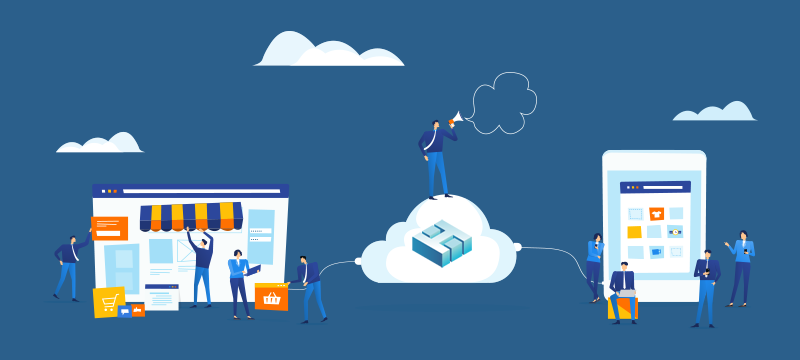With 2023 promising to be another challenging year for retailers, more of them are expected to make use of cloud-based technologies to cut costs, automate operations, mine data and enhance customer experiences. Here we look at the latest trends in how retail enterprises are making use of cloud technology and the potential impact this can have.
AI-powered analytics
With uncertainty in the market, retailers are looking to data analytics to improve their decision-making. Today, this increasingly involves the use of artificial intelligence and machine learning. These powerful cloud technologies provide deeper insights into the data they analyse, enabling companies to predict changes in the marketplace, connect better with consumers, identify new opportunities and deal more confidently with threats.
When it comes to customer analysis, for example, AI provides retailers with the means to go beyond analysing purchase histories and search terms. Conversational AI now lets businesses use data from a wide range of customer interactions, analysing the transcripts of email, chatbot, social media, telephone and messaging app conversations to create customer journey maps and deliver important insights about individual customers and segmented customer groups.
Headless checkout technology
Giving shoppers more convenient ways to buy not only improves the customer experience; it also maximises omnichannel sales opportunities, something that companies will be eager to do during the ongoing economic downturn. For this reason, one of the latest trends in retail is the adoption of headless checkout technology. Used creatively, this cloud-based technology can enable customers to buy from a wider range of purchasing channels rather than just the website checkout, for example, they could buy directly via marketing emails, online videos or even from QR-coded packaging.
Retailers are increasingly deploying headless eCommerce platforms: cloud-based applications where the customer-facing and backend elements of the software are separated. This separation, which is where the term headless gets its name, enables businesses to develop new purchasing options, using APIs, without the need to alter the platform’s backend. As a result, the platform can remain operational during development, ensuring existing purchasing channels don’t go offline while new ones are created.
Personalised augmented reality
Retailers wishing to deliver immersive customer experiences are benefitting from the combination of artificial intelligence and augmented reality. In doing so, they can provide highly personalised shopping experiences. For example, AI can deliver personalised product recommendations from which customers can experience the products in realistic, high-definition, three-dimensional images.
Available for use both online and in bricks and mortar stores, the benefit for retailers is that this kind of personalised augmented reality offers a better way to view products and provides the kind of immersive experiences that customers want while generating sales and brand loyalty.
Chatbot support
With customer experience remaining critical to attracting and retaining customers, retailers must continue to deliver excellent customer service and support during 2023. This is, however, a costly operation to run, with customers expecting 24/7 support and their issues dealt with swiftly.
One cloud-based technology that is helping retailers to deliver high-quality support while maintaining operational efficiency is the AI-enabled chatbot. Advances in conversational AI mean this type of application can now take a greater customer-facing role, delivering a broader range of services to customers without the need for human intervention. When human intervention is required, AI chatbots are also able to determine the right team to connect the customer to.
Other cloud benefits
Retailers can benefit from the cloud in other ways than those mentioned above. For those looking to reduce the costs of their IT operations, cloud migration removes the need for capital investment in hardware and takes away the costs of power, maintenance and insurance. Instead, all they pay is a manageable monthly fee. The cloud also offers instant scalability, ensuring retailers always have the IT resources they need to carry out analytics processing or handle spikes in demand. Additional resources can be had temporarily and are paid for on a pay-as-you-go basis.
As retailers need critical applications, like their website, to be available all of the time, the cloud’s ability to offer 100% uptime, guaranteed by SLA, makes it a more rational choice than dedicated servers.
Conclusion
While the economic outlook for the next 12 months is rather cautious, retailers are making use of cloud-based technologies to improve operational effectiveness, cut costs, increase understanding of their customers and deliver better and more immersive customer experiences. Though the trending technologies above are the tools being deployed to achieve this, retailers wanting to take advantage of them will need to have the right cloud infrastructure in place. For information about our managed cloud solutions, visit Hyperslice.com

